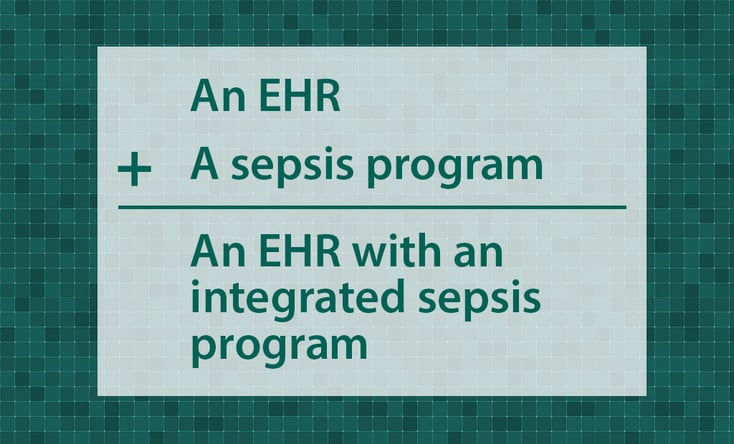
Sepsis contributes to nearly one in two hospital deaths, making it one of the biggest concerns in healthcare today. Improving survival rates requires a combination of early symptom recognition and aggressive treatment.
According to the CDC, there are over one million cases of sepsis each year, killing more than 258,000 Americans and making it the ninth leading cause of disease-related deaths.
In addition, $23.7 billion was spent on sepsis-related hospitalizations in 2013, making sepsis the most expensive condition treated in U.S. hospitals.
So what can we do to help ease the pressure of all those staggering numbers?
Most providers would prefer to rely on their EHR vendor for sepsis technology, but that all depends on how intuitive your EHR is. If you can’t leverage your system to support early identification through alerts and suggested actions that improve both direct care and quality outcomes for your patients, you’re leaving clinicians to hope for the best and prepare for the worst.
An EHR integrated with a sepsis solution will analyze the data collected and interpret it in real-time, in a way that’s more meaningful to clinicians. Physicians and nurses are alerted on status boards and trackers throughout the EHR the second a patient meets the sepsis criteria, expediting interventions and improving both direct care and quality outcomes for the patients they serve.
It’s important for clinicians to use every tool in their arsenal to combat this potentially deadly infection and keep these mind boggling sepsis stats from increasing.

So if you’re looking for an EHR with an integrated sepsis program, here’s what you should look for:
- Quality and Surveillance
A quality and surveillance solution will help you proactively monitor patients who may be at risk for sepsis in addition to other conditions. The surveillance quality boards will analyze key clinical and demographic data across your EHR, and upon satisfying rules-based criteria, patients who require attention are flagged on quality boards and condition-specific patient lists. In addition, a solution with actionable boards can speed interventions through on-the-spot ordering, documenting, or messaging of the care team.
- Communication
Find a surveillance solution that broadcasts alerts to status boards and trackers throughout your integrated EHR. This will cut down on communication delays and expedite interventions.
- Watchlist
An organization-wide and actionable surveillance watchlist provides quality managers with a high-level view of those inpatients who qualify for one or more surveillance profiles.
Download our case study to see how Newman Regional Health uses MEDITECH to transform sepsis treatment.
- Expert-Based Content
Standard content gets organizations up and running fast with Surveillance Boards for quality measures (e.g., AMI, Stroke), specific conditions (e.g., CAUTI, CLABSI, Sepsis), consults (e.g., RT, PT) and preventive measures (e.g., Readmissions, Restraint Orders). Find a solution that offers flexibility within rules, order sets, and clinical panels, so you can customize your own sepsis management processes into your EHR.
- Education
Stay up-to-date on sepsis awareness through healthcare forums, webinars, white papers, social media, and informative websites such as the the one created by the Society of Critical Care Medicine.
MEDITECH’s sepsis program is helping organizations to improve patient safety and contain costs. Having used the program over the past six months, I've seen how it not only improves outcomes, but also offers measurable and reportable criteria for continued improvements. The rules engine alerts us to subtle signs and symptoms that could easily be missed or misinterpreted. Also, the streamlined clinical workflows that MEDITECH designed in its sepsis toolkit are helping us to meet SEP-1 core measures.
Having an EHR solution with a sepsis program gives hospitals and health networks a leg up on identifying and managing at-risk patients. And any system that saves time and takes the guesswork out for providers is definitely one worth investing in.
Learn more by downloading our case study on how Frederick Memorial reduced its sepsis mortality rate by 65%.




